Best Cutting Boards for Your Kitchen
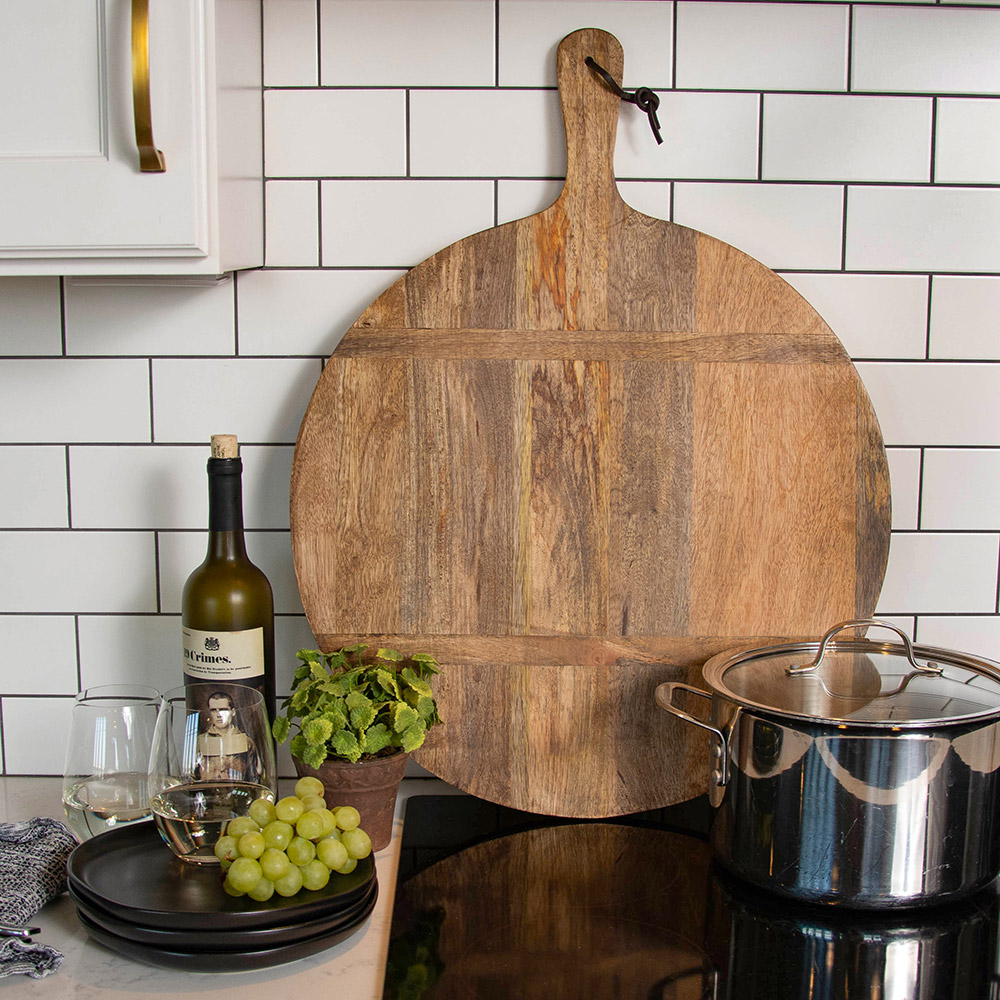
Last updated September 7, 2023
Cutting boards are an essential daily-use kitchen tool that makes meal prep efficient. Whether adding to your current collection or stocking your kitchen for the first time, this guide will help you find the best cutting boards for your kitchen needs. Read more to learn more about materials, sizes, care and storage and become a cutting board pro.
Table of Contents
Understanding Cutting Board Sizes
Wood Cutting Boards
Bamboo Cutting Boards and Other Materials
Plastic or Poly Cutting Boards
The Best Cutting Boards for Food Preparation
How to Wash Your Cutting Boards
Understanding Cutting Board Sizes
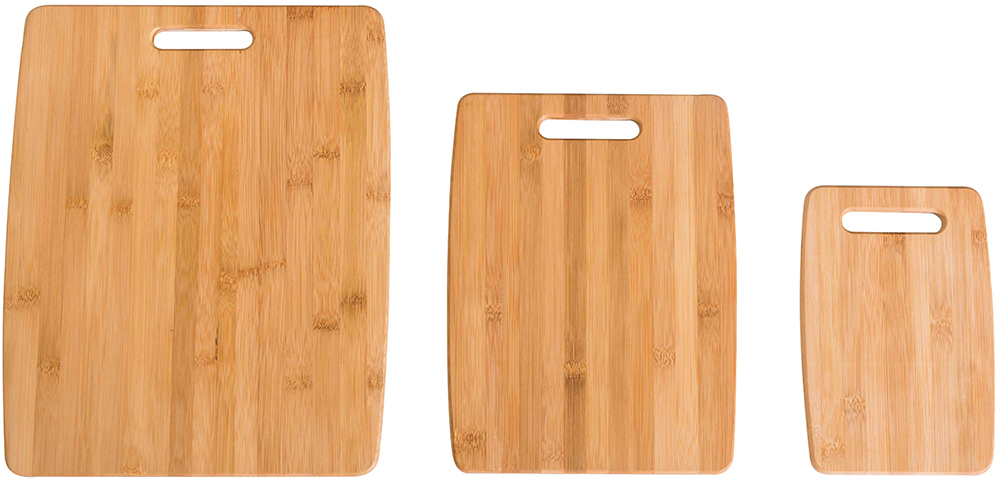
Cutting boards of all materials are available in several sizes, ranging from large enough to cover most of your countertop to small enough for a single wedge of cheese. The size of your cutting boards depends on the task that lies ahead.
A large cutting board provides ample space for food prep. It’s large enough to stretch across a sink to create an extra workspace but not so large it’s impractical. Smaller cutting boards are great for detailed tasks. Use them to make food decorations, throw together a sandwich for your toddler or create a lunchtime charcuterie for one.
Wood Cutting Boards
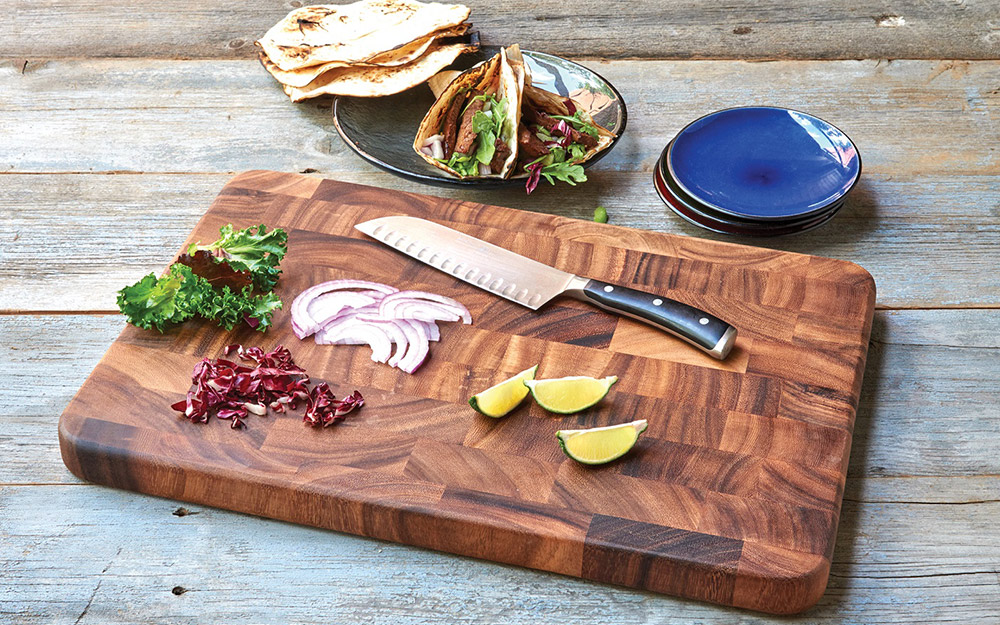
Wood cutting boards are made from several types of wood. Hardwoods like maple, teak, beech and walnut are the best wood for cutting boards. Great food-grade wood cutting boards have low porosity. Low porosity helps the wood repel moisture and bacteria.
Look for wood cutting boards with a medium to high Janka hardness rating. This rating is a measurement of the force tolerance of the wood. The higher the rating, the more resistant the board will be to scratches and gouges from cutting tools.
Wood cutting boards can be either edge-grain or end-grain. Edge grain boards have a pattern that runs lengthwise. The surface looks like long strips of fused wood. End grain boards have a checkerboard pattern with small fused squares. Edge-grain cutting boards are the most common and wallet-friendly choice. These boards have a structure that stands up well to sharp knife blades. In addition, their open, fibrous design is better at self-healing. After the knife strikes an end-grain board, the wood fibers often close back up.
As long as wood cutting boards are well cared for and properly stored, they’re a versatile and durable board option for everyday cooks.
Bamboo Cutting Boards and Other Materials
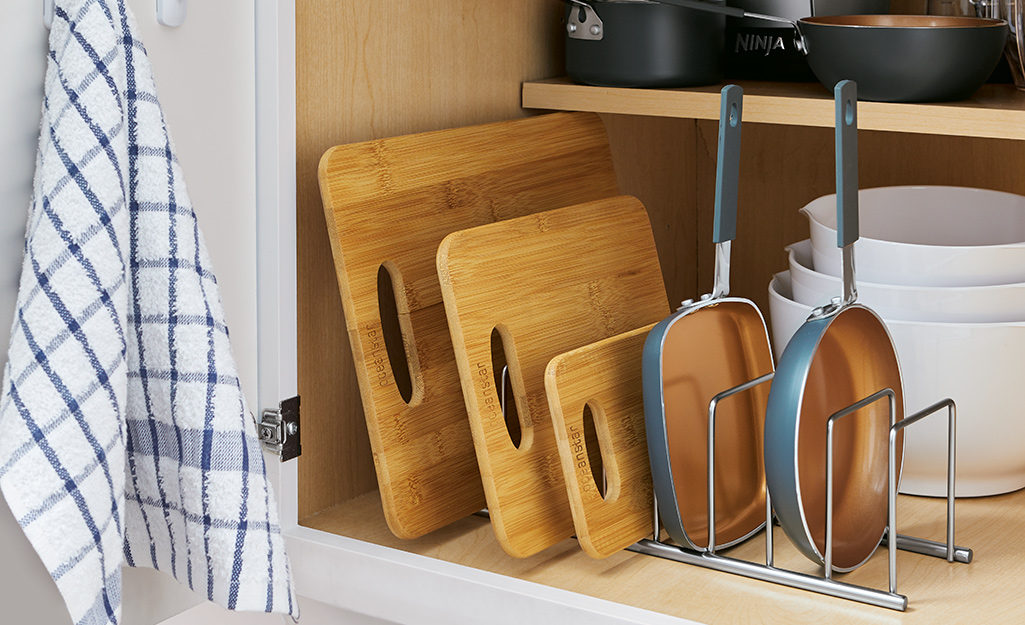
There are a few other materials used for kitchen cutting boards. They’re less common but worth exploring when looking for the best cutting boards for your needs.
Bamboo is more of a hard grass than an actual wood. It is renewable, fast-growing, moisture-resistant and 19 percent harder than maple wood. This makes it a highly sanitary choice of material for a cutting board. The best bamboo cutting boards will be easy to maintain, are durable and offer an aesthetically pleasing grain pattern on the surface.
However, a bamboo surface is also somewhat tougher on a knife blade than traditional wood. Knives used with bamboo boards must be sharpened more often. In addition, the cutting action of the knife is slightly less smooth than with wood or plastic.
Rubber cutting boards are softer than wooden cutting boards. They’re most commonly used by restaurants and food professionals. Rubber cutting boards are durable, sturdy and easy on your knife. They’re low-maintenance and last for many years with minimal maintenance.
Stone and glass cutting boards are the least durable option. While they’re typically eye-catching and can make a thoughtful gift, they aren’t considered the best option for daily use. Glass or stone cutting boards are ideal for serving some pastries, a quick bread and cheese tray after dinner, or simply leaving on display as a kitchen keepsake.
Plastic or Poly Cutting Boards
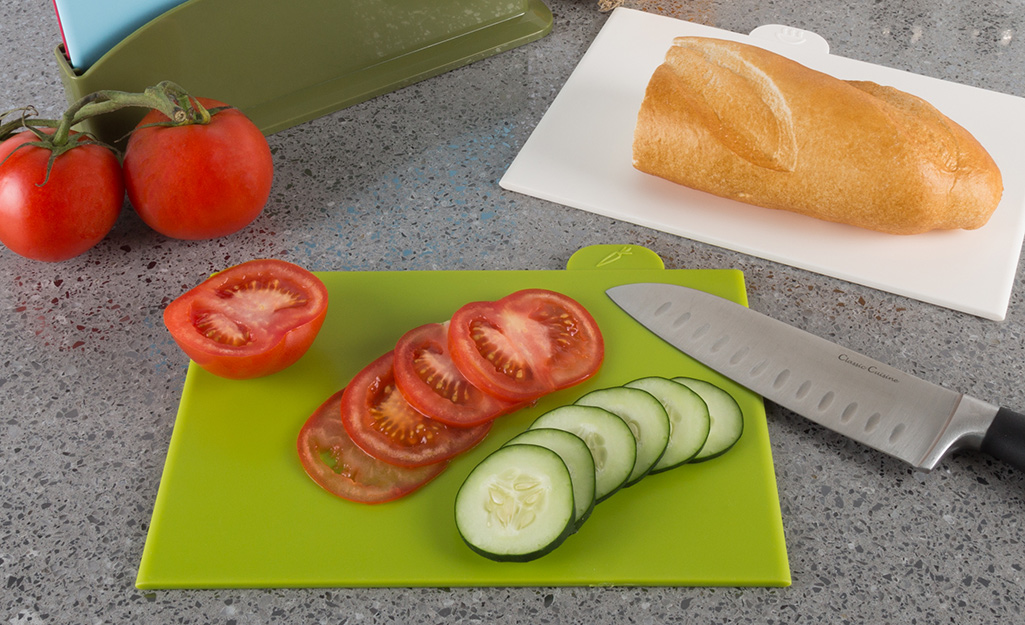
The best plastic cutting boards are easy on the wallet, simple to clean and easy to replace when needed. They’re an excellent option for a busy kitchen. Have many plastic boards in various sizes for a similar investment as just one wooden cutting board. The ample variety is helpful for daily food prep. It allows you to get more done without cleaning your board between each separate task.
Plastic cutting boards are lightweight and slim, making them easy to store. They’re available in several colors, patterns and styles to fit your kitchen style. Polyethylene or polypropylene boards are the top choices for plastic cutting boards. They slip less than smooth plastic and provide better knife contact and stability during cutting.
Tip: Purchase multiple plastic cutting boards of different colors or patterns. Designate one style for each type of food, separated by red meat, chicken or vegetables. This prevents cross-contamination and helps the boards last longer.
The Best Cutting Boards for Food Preparation
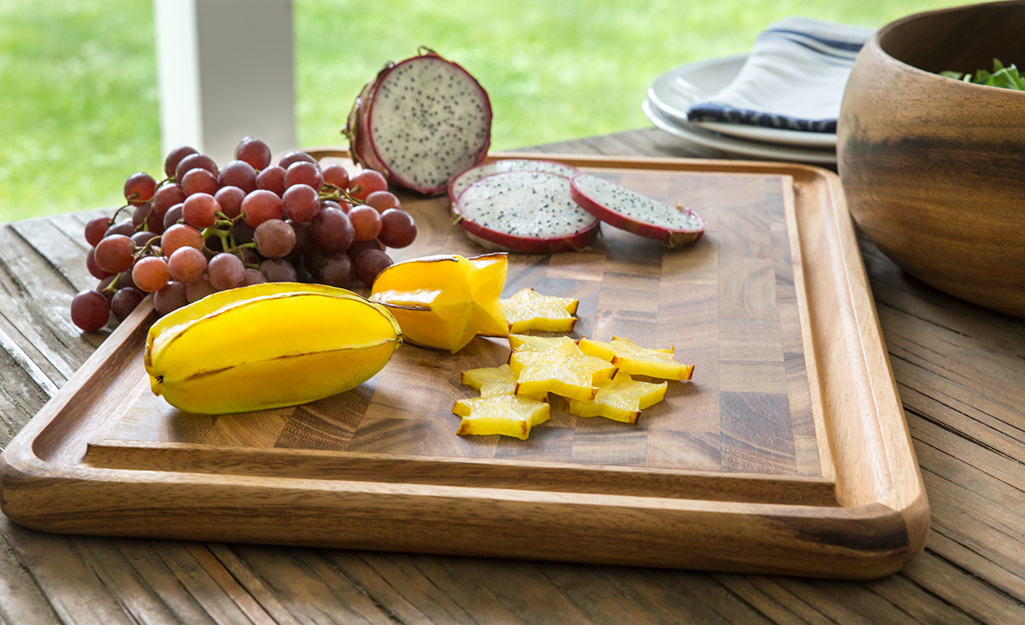
Different types of food products benefit from specific cutting boards. Below is a breakdown of the best boards for various types of food:
Raw meat is best prepped on plastic or rubber cutting boards. Because these boards are dishwasher safe, easy to clean and have a non-porous surface, they’re less likely to collect bacteria from raw meat. Look for a board with a juice groove, non-slip grip and Microban antibacterial protection for extra safety when working with raw meat. As the board ages, it may becomes more difficult to clean carefully. Be sure to replace plastic cutting boards used for raw meat when the surface becomes very scratched.
Vegetables and herbs are best chopped on wooden and bamboo cutting boards. The solid surface helps guide knives through delicate leaves. Because most washed produce can be cut on the same surface without washing, it keeps your veggie prep quick and efficient.
How to Wash Your Cutting Boards
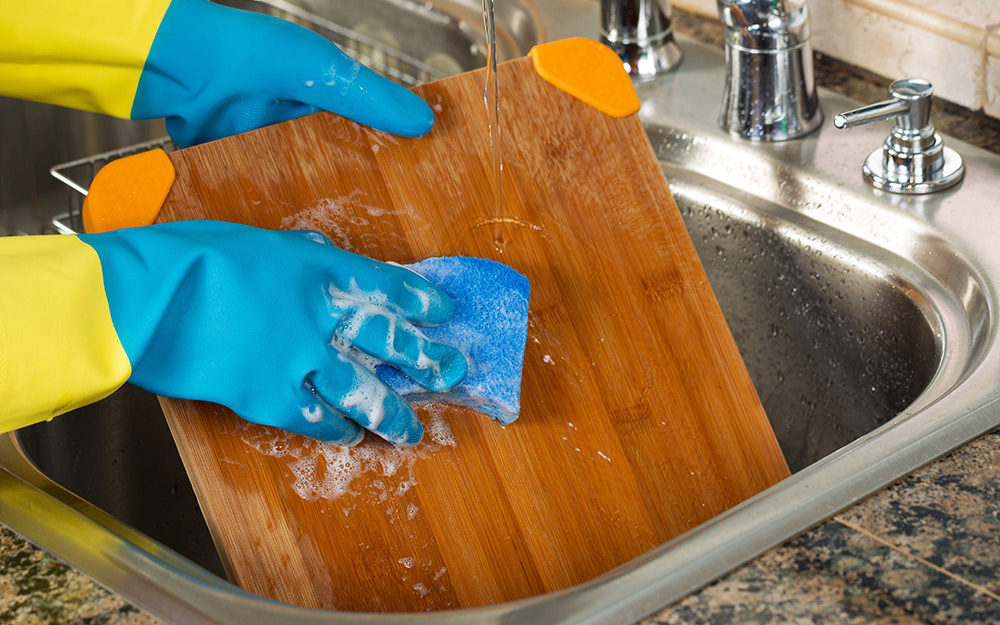
Cleaning your cutting boards after every use extends their life. Wood and bamboo cutting boards should never be soaked for any time. All other cutting boards benefit from a good scrub under hot water to loosen any fats on the surface. This also cuts down on the potential for bacteria.
Wood boards must be conditioned with food-grade mineral oil or beeswax at least once every three months. Some types of wood experience more shrinkage as they dry out than others. These boards need to be oiled more often. Follow the manufacturer’s instructions for care and conditioning for any wooden cutting board.
Tip: For lingering odors or stubborn stains, sprinkle a teaspoon of coarse salt onto stained areas and rub the surface with half a cut lemon. Then, wash and treat as usual.
Best Cutting Boards for Serving
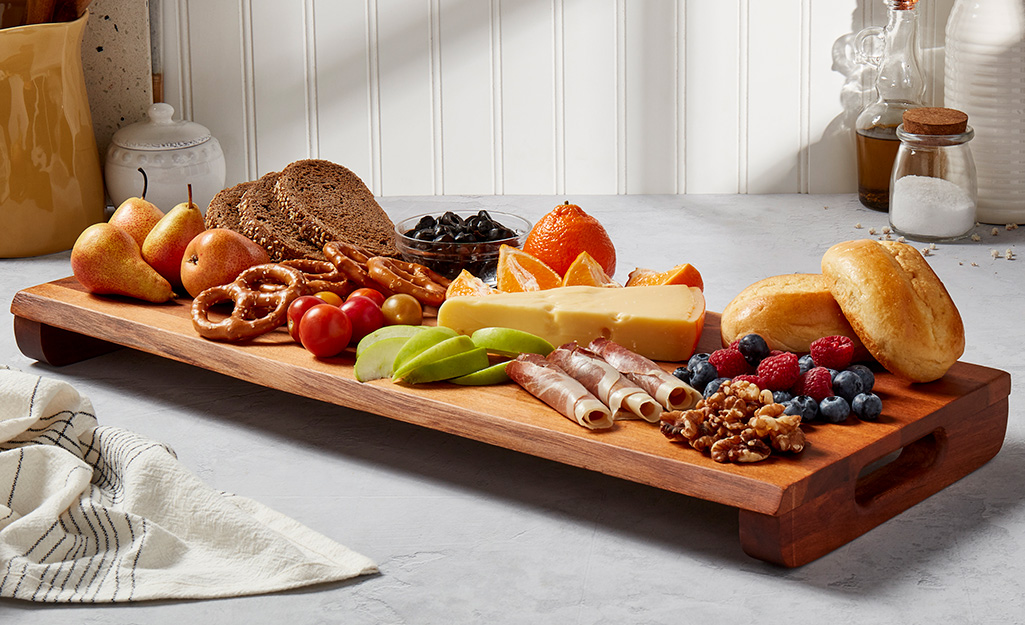
Stone or glass cutting boards are nice decorative kitchen accessories that double as stylish serving pieces for entertaining. Stone and glass boards usually have the surface area to hold many goods. Use a food-safe marker or pen to label your treats for guests. They’re both simple to clean, with several versions capable of going in the dishwasher. They’re the best cutting boards for beautifully displaying party food and enjoying a low-fuss clean-up.
Tip: Chill a stone cutting board in the freezer to serve frozen treats or chocolate-covered confections to keep them from melting during an event.
Cutting Board Safety

Avoid Cross-Contamination:
Cross-contamination happens when bacteria is passed from one type of food to another, specifically from raw animal products (seafood, meat or poultry) to cooked foods, fresh produce or baked goods. Preventing this is one of the main keys to maintaining a clean kitchen and preventing food-borne illness.
- Use separate cutting boards for poultry, seafood and meats.
- Fresh produce and baked items can occupy the same cutting board, but be sure the surface of the produce has been washed before cutting.
- Cutting boards used for raw proteins can be wood, plastic or bamboo, but any board should not be reused until it has been cleaned and sanitized.
Cleaning vs Sanitizing:
Cleaning removes soils or stains. Sanitizing reduces pathogens on surfaces. Both must be diligently employed with cutting boards to prevent cross contamination.
Cleaning and sanitizing follow a 4-step process:
- Clean the cutting board with hot, soapy water. Scrub the board on all cutting sides with a brush or medium cleaning pad to remove any traces of fats and oils that might sink into board grooves and prevent the soap from thoroughly cleaning.
- Briskly rinse the board with clean, running water.
- Sanitize the board with a bleach solution. Mix 1 tablespoon of unscented bleach into a gallon of water. Cover the surface of the board with the bleach solution and allow it to stand undisturbed for 5 to 7 minutes. Rinse the board with clear water.
- Allow the board to air dry thoroughly before putting it away. If needed, you can also pat the board dry with clean paper towels and reuse.
If allowed by manufacturer’s directions, acrylic and plastic cutting boards can be washed in the dishwasher. However, you should still clean and scrub the board before placing it in the dishwasher. Wooden and bamboo cutting boards should always be washed by hand.
Since a bamboo cutting board is harder than other woods boards, it resists knife grooves and does not absorb much moisture. Since it is more resistant to bacteria, sanitizing for a bamboo board is optional. Cleaning it with hot soapy water is usually sufficient. Periodic oiling helps it retain moisture.
Replace Worn Cutting Boards:
Once any cutting boards develops extensive scarring, it should be replaced. Wood boards and many plastics can be recycled. Check your local recycling program to see if your community offers a recycling program.
How to Store Your Cutting Boards
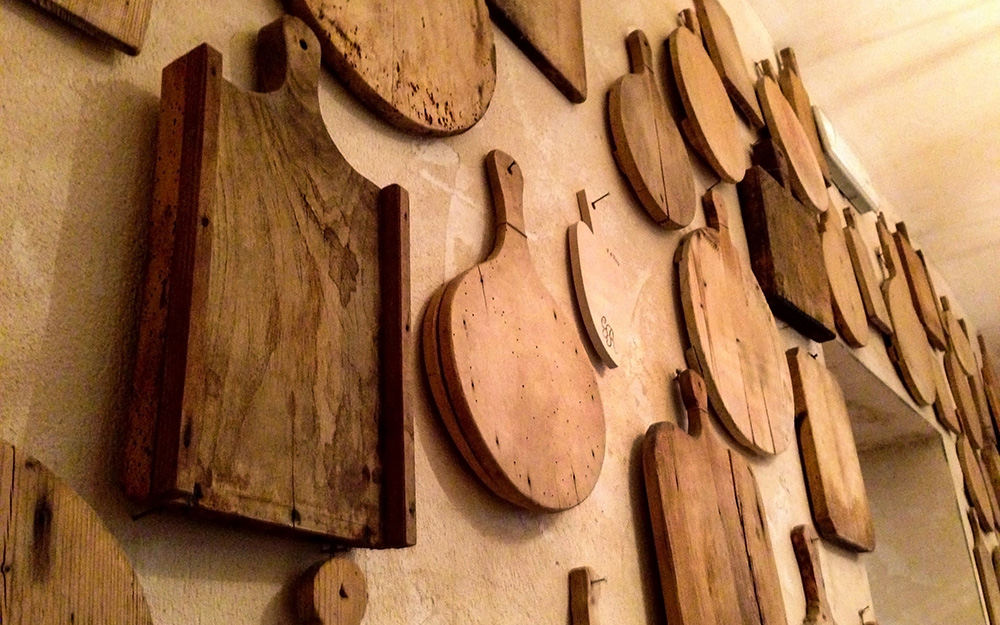
When storing cutting boards, find an area that will be handy when it comes time to prep your food. Choose a space close to your counter or kitchen island. Make sure there’s good air circulation.
Consider using wall space to hang your cutting boards near your work surface. Many cutting boards come with handle loops, good for hanging on the wall. Also use baskets or bins to store multiple cutting boards together.
Know your cooking and entertaining habits to determine the best cutting board for your kitchen. In the end, you may find it’s best to collect a few different types of boards in varying sizes and materials. A set of cutting boards with variety accommodates all your kitchen tasks and entertaining needs. Find the cutting boards of your dreams. The Home Depot delivers online orders when and where you need them.


































